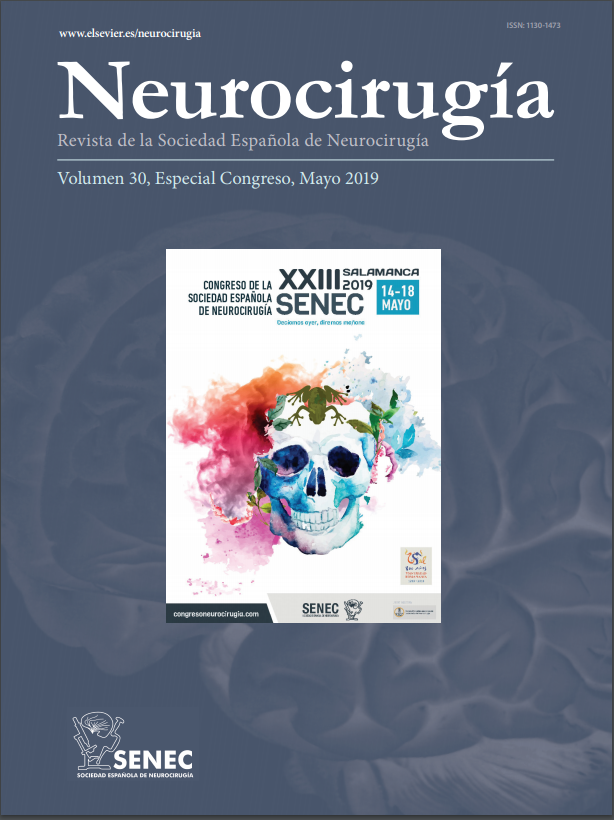C0332 - ENDOSCOPIC ENDONASAL ODONTOIDECTOMY. HOW I DO IT
Hospital Universitario Marqués de Valdecilla, Santander, España.
Objectives: Surgical anterior decompression is the treatment of choice for symptomatic irreducible ventral craniovertebral junction (CVJ) compression. Transoral approaches were previously the gold standard and were associated with successful brainstem decompression. However, morbidity associated with the transoral approach includes prolonged intubation, delayed feeding, prolonged hospital stays, and velopharyngeal insufficiency. Since 2005 a new endoscopic technique exploiting the natural nasal corridor has been described and implemented for surgical management of extradural or intradural pathologies involving the ventral CVJ. We present the case of a patient undergoing endoscopic endonasal odontoidectomy, following a cervical posterior fixation.
Methods: 84-year-old woman was admitted due to 1-month history of sudden cervicalgia refractory to analgesic treatment, and persistent fever during the last 2 weeks. Physical examination was normal. Blood tests revealed CRP of 6.8 and leucocytosis. Cervical MRI was performed, which showed osteomyelitis of the odontoid process with involvement of soft tissues and a small subligamentary abscess. Initially it was decided to follow a conservative management placing a Philadelphia cervical collar and starting antibiotic treatment. Control MRI was performed 7 days later and it showed an increase in the retroodntoid abscess with osteomyelitis of atlas, axis and clivus, and signs of bulbar and medular compression. Patient persisted with cervical pain but without neurological alterations.
Results: Surgical treatment was purposed. First performing a posterior occipito-cervical fixation, and then an endoscopic endonasal odontoidectomy. Postoperative evolution of the patient was satisfactory. The patient reported improvement of cervical pain. No new neurological symptoms appeared. Control cervical CT scan showed an adequate anterior decompression.
Conclusions: The endoscopic endonasal route to the odontoid process has proven to be a feasible, safe and well-tolerated procedure. Nowadays, this technique has a place in the therapeutic armamentarium of craniovertebral junction pathologies. A good knowledge of endoscopic anatomy and mastering of endoscopic techniques remain essential to achieve good results.







